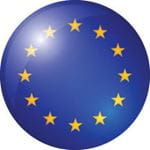
Capitalise on the market opportunities in the European Union
Capitalise on the market opportunities in the European Union
 The European Union consists of 27 member states located in Europe. For most products entering the EU, there are harmonised regulations (EU Directives) which need to be complied with depending on its product scope. Most directives will require a CE Mark, a mandatory mark that demonstrates a manufacturers’ compliance to applicable EU directives. Individual country requirements may also apply.
The European Union consists of 27 member states located in Europe. For most products entering the EU, there are harmonised regulations (EU Directives) which need to be complied with depending on its product scope. Most directives will require a CE Mark, a mandatory mark that demonstrates a manufacturers’ compliance to applicable EU directives. Individual country requirements may also apply.
Various types depending on countries.
European Commission (EC)
EMC:
CE marking procedure:

1 CE marking is not a certification, approval or quality mark, but a manufacturer’s declaration that the product meets the essential requirements of the respective directives. Most EU Directives require CE marking.
2 Conformity Assessment Procedure options for products with minimal risk include DoC while products with greater risks may require tests, audits or additional certificates from a Notified Body.
European Commission (EC)
Energy Efficiency:
RoHS & WEEE:
CE marking procedure:
Product categories requiring CE marking include the products listed below:
A full list of product categories may be found here.
Product groups with regulations according to the ErP Directive include:
To determine if a particular product is subject to the above regulations, please contact us.
5 product groups of household appliances with "rescaled" labels:
TÜV SÜD has the experience and capability to support manufacturers in attaining compliance with EU4 (and individual country) requirements and obtaining the necessary approval. The TÜV SÜD family is a Notified Body with the expertise and capability to test your product to a large variety of Directives. TÜV SÜD can provide:


 6
6 
4 EU Directives are the minimum requirements that manufacturers must meet for products to enter the EU. However, individual country requirements may also be applicable
5 In addition to CE marking, which is simply a symbol for trade with the assumption of conformity, TÜV SÜD Marks are a certification of compliance with European (EN) standards.
6 The GS or Geprüfte Sicherheit (tested safety) mark is a voluntary certification mark applied to finished products that signifies their compliance with all the statutory requirements of the German Product Safety Act.
European Commission (EC)
3Notified bodies are organisations that have been accredited by EU Member States to serve as independent test laboratories to access whether products meet the requirements of product directives. They must have the necessary qualifications to meet the testing requirements set forth in the directives.
CE marking procedure:
TÜV SÜD has the expertise and laboratory infrastructure to support manufacturers in obtaining the necessary approvals and compliance in accordance to the European Union's standards and requirements. TÜV SÜD test reports are widely accepted and recognised by authorities internationally. TÜV SÜD also supports manufacturers in obtaining voluntary endorsement labels.

Overview of compliance requirements worldwide for electrical and electronic goods.
Learn more
Sélectionnez votre emplacement
Global
Americas
Asia
Europe
Middle East and Africa